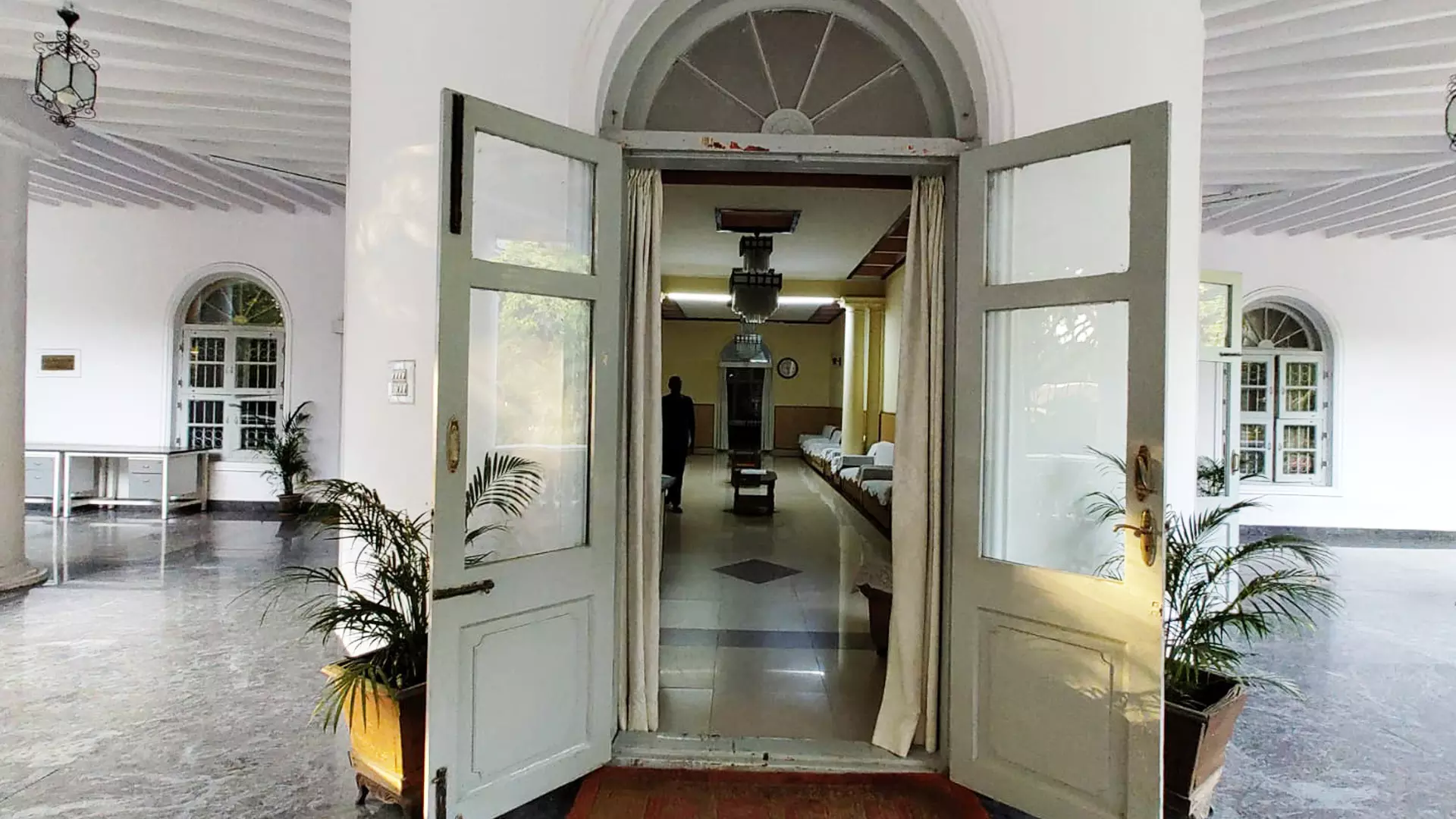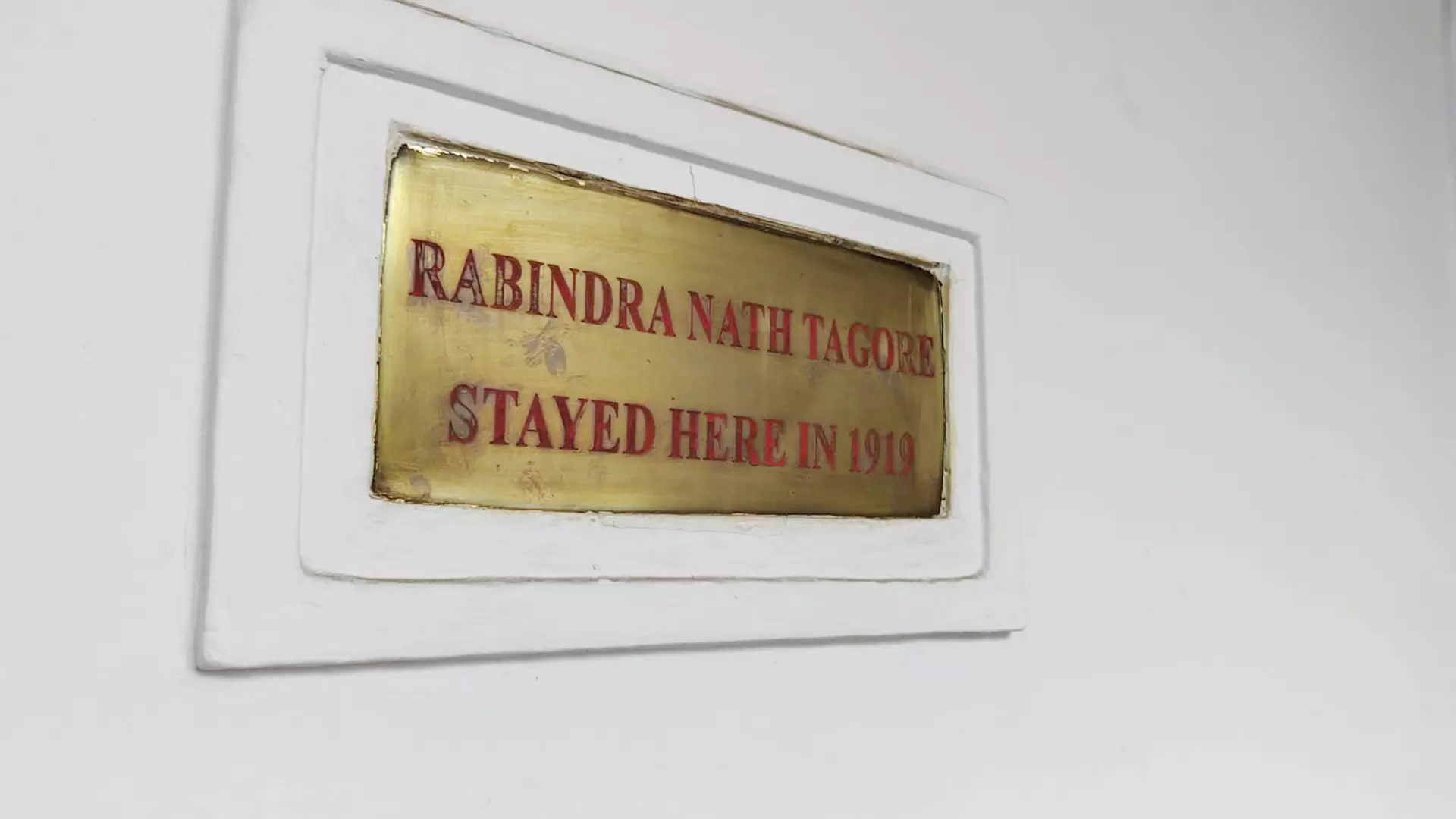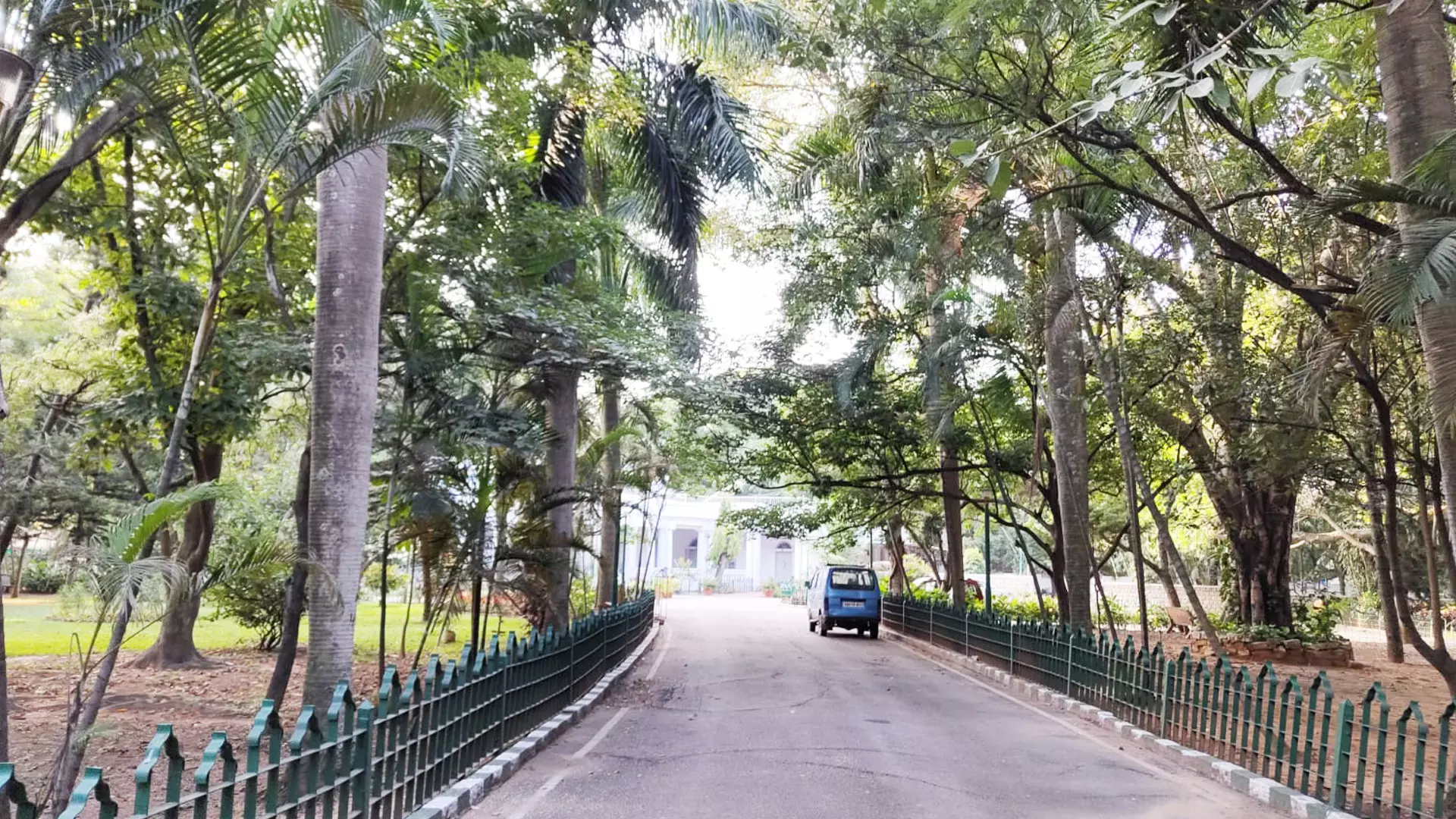
- Home
- India
- World
- Premium
- THE FEDERAL SPECIAL
- Analysis
- States
- Perspective
- Videos
- Sports
- Education
- Entertainment
- Elections
- Features
- Health
- Business
- Series
- In memoriam: Sheikh Mujibur Rahman
- Bishnoi's Men
- NEET TANGLE
- Economy Series
- Earth Day
- Kashmir’s Frozen Turbulence
- India@75
- The legend of Ramjanmabhoomi
- Liberalisation@30
- How to tame a dragon
- Celebrating biodiversity
- Farm Matters
- 50 days of solitude
- Bringing Migrants Home
- Budget 2020
- Jharkhand Votes
- The Federal Investigates
- The Federal Impact
- Vanishing Sand
- Gandhi @ 150
- Andhra Today
- Field report
- Operation Gulmarg
- Pandemic @1 Mn in India
- The Federal Year-End
- The Zero Year
- Science
- Brand studio
- Newsletter
- Elections 2024
- Events
Haunted house: Why Karnataka wants to convert Balabrooie Guest House into an MLAs-only club
About six months ago, two people working at a house next to the Balabrooie Guest House in Karnataka’s Bengaluru reported ill and died. The two had reportedly, on the instructions of the then occupant of the guest house, cut the branches of the trees on the property, with assistance from workers of the Bruhat Bengaluru Mahanagara Palike.Doctors found that the two had been unwell for some...
About six months ago, two people working at a house next to the Balabrooie Guest House in Karnataka’s Bengaluru reported ill and died. The two had reportedly, on the instructions of the then occupant of the guest house, cut the branches of the trees on the property, with assistance from workers of the Bruhat Bengaluru Mahanagara Palike.
Doctors found that the two had been unwell for some time and died of natural causes but the deaths reignited the rounds of horror stories that are perhaps as old as the Balabrooie Guest House. The deaths also led to renewed debates over the plans to convert the property into a club for Karnataka legislators.
The rumours are rife at a time the 170-year-old Balabrooie Guest House, considered a heritage building, is in the news because of the plans to convert the property into an MLA’s club. The secretary to Department of Personnel and Administrative Reforms wrote a letter to the chief engineer of the Public Works Department on July 3 regarding the conversion of Balabrooie Guest House into a 'Constitution Club', and the letter has received Chief Minister Siddaramaiah’s stamp of approval.
But since changing the guest house’s status would require felling of trees, environmental activists have expressed their disapproval and knocked at the doors of the National Green Tribunal (NGT).
If the property is converted into a Constitution Club, it will require a car parking area, a swimming pool and other facilities such as a badminton or volleyball court, which would inevitably require some trees to be felled. Some of these trees are over a century old and so the green activists are protesting against the project. But locals believe that whoever disturbs the status quo in the area suffers problems.

Balabrooie Guest House in Karnataka’s Bengaluru was once the abode of state chief ministers.
“Whoever tries to change the status quo of the structure will suffer problems. This has been a pattern in the past. People who tried to cut the trees, or even their branches, faced trouble in life,” Ranganath RK, a businessman who visits Balabrooie for morning walks, told The Federal.
Ranganath said Maheshwara, a spirit of Lord Shiva, resides in the area. “There is a temple nearby called Oni Muneshwara Temple. Whoever tried to disturb the area faced sudden problems,” he added.
“There is a strong belief in the residents nearby that Muneshwara has his presence in the area during nights. That’s why the ministers or other VIPs refuse to make it their official residence,” Ranganath said.
Ranganath is right. The superstition isn’t just part of local folklore but has led many politicians to refuse to stay in it.
The sprawling expanse of manicured lawns and immaculately-maintained columns notwithstanding, for most part the Balabrooie Guest House, near Windsor Manor, lies empty and forlorn. But that wasn’t always the case.
It was once the home of Sir M Visvesvaraya and later of Karnataka chief ministers Devaraj Urs and S Nijalingappa.
Not just that. At one point, the guest house hosted the likes of Mahatma Gandhi, Jawaharlal Nehru, Rabindranath Tagore, and Dr BR Ambedkar, apart from numerous politicians and Supreme Court judges.
In May 1928, Tagore visited Colombo to regain his health. However, even after a 10-day stay on the island nation, there was no visible improvement in his health. Subsequently, he came to Bangalore in June 1928. He stayed for nearly three weeks at Balabrooie. It was here that he began writing his famed Shesher Kobita and parts of Yogayog.

Rabindranath Tagore stayed for nearly three weeks at Balabrooie.
It later became the residence of chief ministers. The first chief minister of Karnataka, KC Reddy, is said to have made a beautiful garden and planted many trees on the property and in the vicinity.
But now, the famed guest house serves mainly as lodging for judicial commissions and important guests.
So, how did this building known for its European classical appearance and being a political landmark earn the reputation of being jinxed?
The process began in the 1980s. Then Karnataka chief minister R Gundu Rao, a Congress leader, felt that the structure suffered from various ‘vaastu defects’ and so he decided to stay in another government bungalow. His successor Ramakrishna Hegde, from the Janata Party, also chose to stay at his house and not Balabrooie.
But Hegde’s successor SR Bommai, also from Janata Party, decided to stay in Balabrooie when he assumed office in August 1988. In doing so, he challenged the superstition. But people’s belief in the jinx grew when Bommai’s government lost power as his MLAs defected and Bommai had to vacate the bungalow.
Ramu Gowda, a retired chef who once worked at the Balabrooie Guest House, says it is impossible to say when the belief grew. “Some VIPs who came to stay indulged in some malpractices and this led to his health deteriorating. It has become a haunted house,” Gowda told The Federal.
While no one knows how and when the jinx stories started, there are several stories that locals share about the ‘horror stories’ linked to the guest house’s past, making a case for not converting the guest house into a club.
“A businessman tried to build his house modelled on Balabrooie. Muneshwara appeared in his dreams and warned him against going ahead. The businessman now performs a pooja every day for Muneshwara,” said Rangachari M, a local resident.
The people are especially wary of trees being cut because they believe spirits have made the trees their home.
“There is a belief that spirits live on the trees of Balabrooie. They are the spirits of people who faced unnatural deaths over a hundred years ago,” said Jayanand Patil, a local police official.
An MLA, who is a resident of Bengaluru and spoke on condition of anonymity, said that he is opposed to the project for the same reason.
Rationalists, on the other hand, are opposed to the superstition. Senior anti-superstition activist T Narasimha Murthy told The Federal that all these stories are just a figment of imagination. “I am ready to stay the night at Balabrooie and face those ‘powers’. Those are manufactured stories and have no connection with reality,” he said.
Murthy along with his friends, including several professors and activists, has stayed and slept in graveyards, eaten food during the lunar and solar eclipses, to bust superstitious beliefs among the public. He was also part of activists, who pressured the Siddaramaiah government in 2014 to bring out the Anti Superstition Act in Karnataka.
The superstitions apart, the project is a threat to the ecology of the area. The guest house spread over three acres is home to trees that are decades old, some even as old as a century. They include keystone species such as banyan, mahua and cycas, the living fossil, a tree which is almost a century old. While the roots of these trees fan out to form a natural water absorption system, 50 rare bird species have been documented to be thriving in this ecosystem by ornithologist M Sridhar.
Old idea
This, however, isn’t the first time a proposal has been mooted to convert the guest house into a Constitution Club. The plan to change the use of Balabrooie Guest House was earlier proposed in the years 2008 and 2014. Owing to the protest by a large number of residents, the project was halted in both instances.
In 2008, BS Yediyurappa was the chief minister of the state when the plan was put forth. In 2014, when Siddaramaiah was the CM, there was a proposal to demolish the building and construct a new one. But it was put on the back burner following stiff opposition from heritage conservationists and civil society members. A public interest litigation questioning the government’s decision was also filed.
In 2021, the state government again started the process of changing the Balabrooie Guest House into a Constitution Club for the recreation of former and present legislators, thereby raising a threat to the trees and greenery around the guest house. In October 2021, the decision was challenged in the Karnataka High Court. The petitioners invoked the Tree Preservation Act to stall the conversion move. In its interim order, the High Court directed a survey of trees in the area and passed a stay on changing the nature of the building.
Two years later, in January 2023, the HC permitted the state to convert the property into a Constitution Club after obtaining necessary permission from the concerned authorities. The HC also directed that the trees should not be damaged.
However, the petitioners submitted that the permission ought not to have been granted because environmental degradation was inevitable if the project was to go through.
With Siddaramaiah’s approval to the plan, Supreme Court advocate Brijesh Kalappa has filed a petition before NGT, Southern Zone, saying it is the right forum to decide on the issue. The NGT will soon begin hearing the case.
Brijesh Kalappa told The Federal that he would have understood had BJP MLAs demanded the move.

Given the antiquity of trees at the Balabrooie Guest House, environmentalists have knocked on the doors of the National Green Tribunal.
“It pains me that the Congress MLAs are creating pressure to convert this building which was visited by Gandhi, Nehru and Tagore,” he said. “I have even written letters to Congress’ national leaders, including Sonia and Rahul Gandhi, to intervene and stop this mindless exercise,” he added.
He pointed out the very idea of an MLAs club is problematic. “How can the government sanction a heritage land for recreation activities?" he asked.
Who built the Balabrooie Guest House
The guest house was built as the bungalow of Mark Cubbon, a native of Ireland, who became the chief commissioner of Mysore in 1834. He hailed from The Isle of Man, located off the British coast in the Irish Sea, where several homes were called Balabrooie meaning 'farm on the river bank'.
The famous botanical garden, Cubbon Park, in Bengaluru is also named after him and has his statue installed inside. But following health complications, Cubbon had to return to Ireland and John Garret became the chief commissioner. It was John Garret, a missionary from Balbrooie in the Isle of Man, who gave the bungalow the name Balabrooie. In 1881, he sold the property to Mysore ruler Chamaraja Wadiyar after which it became the residence of the Mysuru dewan.
After 1947, it became a state property and came to be used as the chief minister’s residence until the superstitions surrounding it grew.
The conversion of the guest house into a Constitution Club for legislators is certainly going to change the nature of the area. Realtors say if the club comes up, construction activity in the area would pick up. Even if the authorities do not cut the trees on the Balabrooie property, concretisation would ensure the roots of the trees are weakened irreversibly.
The real ghost haunting the heritage house is perhaps uncontrolled urbanisation and human greed for luxuries even at the cost of the environment.

